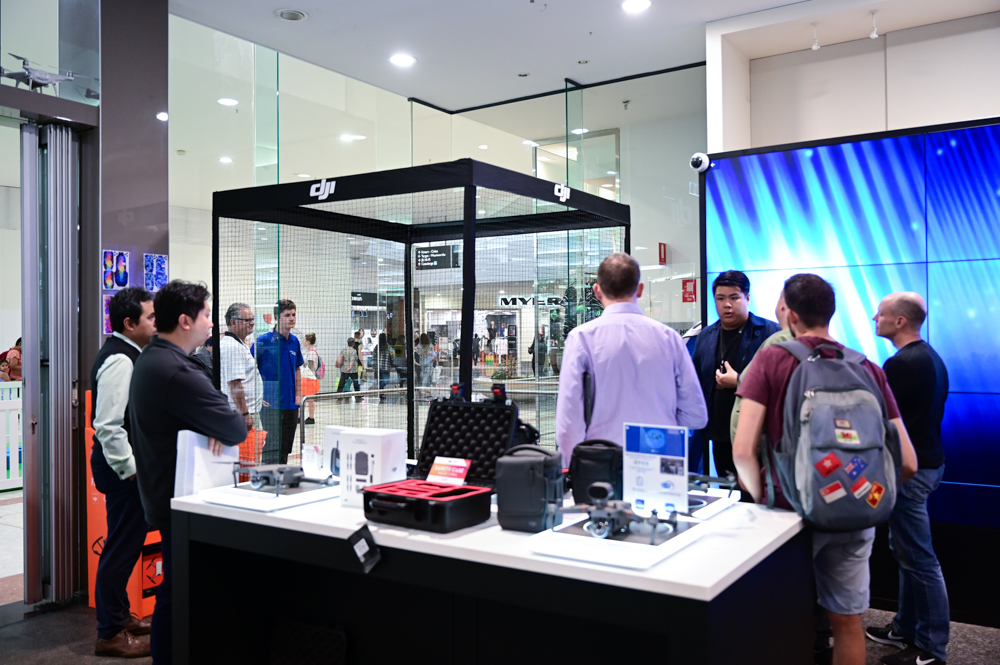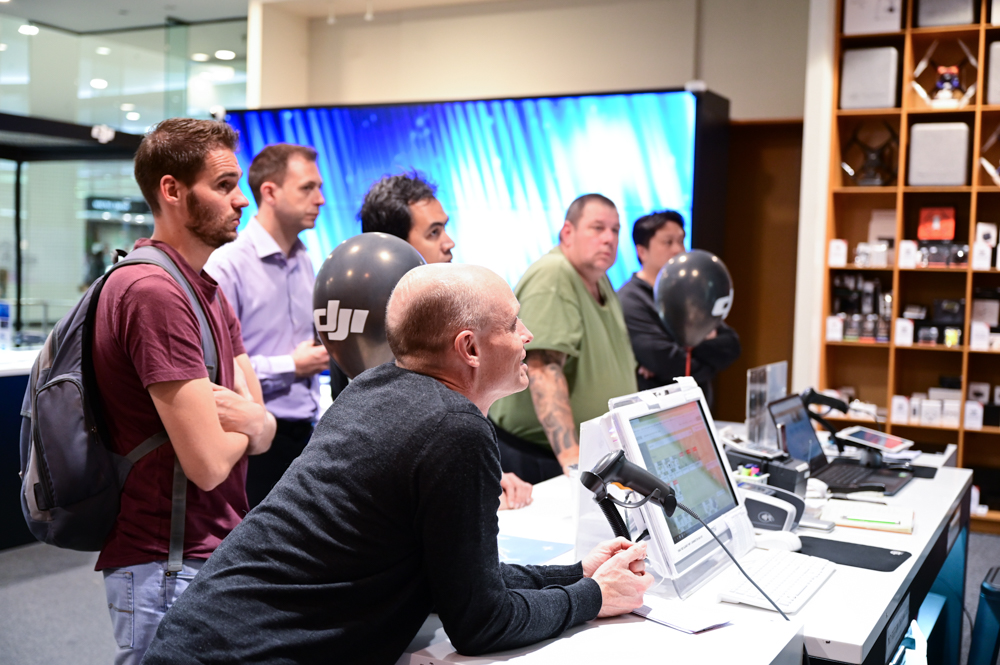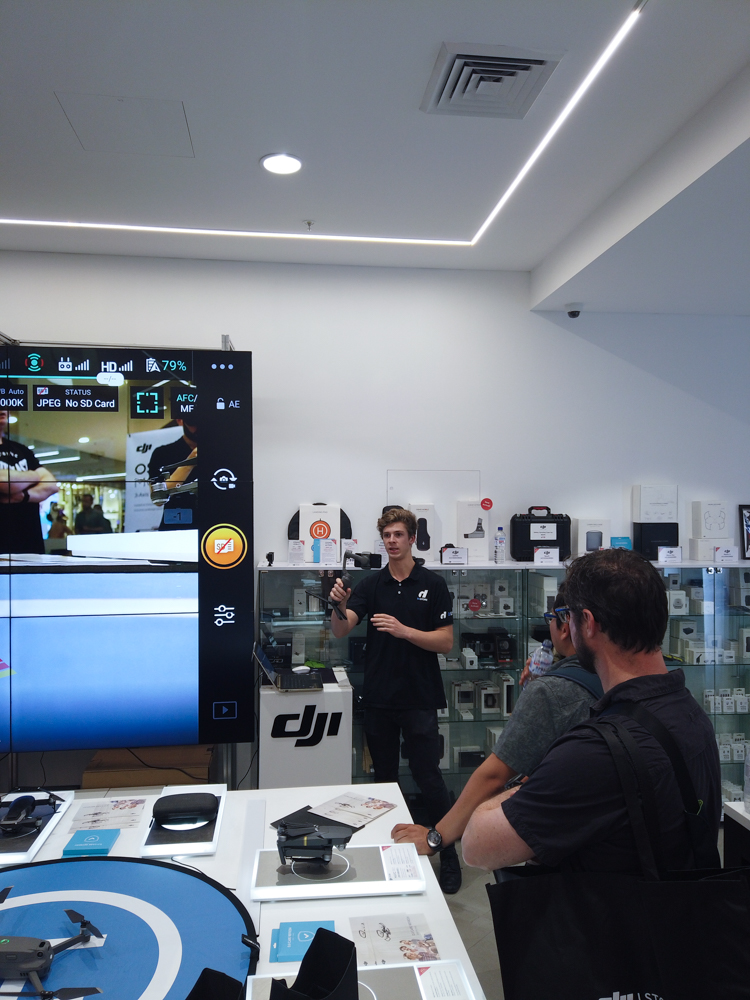New Pilot Experience - 24th of October

Recap!
On
Thursday night, 6-8PM, DJI store hosted their thirteenth New Pilot
Experience across all stores. We had another solid turnout this week
with plenty of first time drone owners and future drone owners.
The two hour course took pilots, with varying levels of experience, through some of the basics to the more intermediate skills. Some of the topics that were covered included pre/post flight checklists, photography/videography settings and CASA laws and regulations.
Furthermore, the workshop also had many questions asked and answered, boosting everyone's confidence when using the drone. We encourage people to ask as many questions as possible. Each week, we try and add those questions into the course to ensure that it is fresh and relevant! We highly recommend you to sign-up if you haven't already as it is definitely worth it! Click here to sign up!
Learning point — Mavic 2 Series Gimbal
The Mavic 2 Pro and Zoom both have a 3-axis gimbal that provides buttery smooth stabilization for the camera. This allows you to capture clear and stable images and videos. The gimbal has a tilt range of -90 degrees to 30 degrees making it possible to do vertical panoramas, which give that inception style look. If you ever find the gimbal to provide angled videos or photos, it is recommended to auto calibrate the gimbal on a flat surface or you can manually adjust the title back to the correct horizon. You might find this may occur after a crash, prolonged use (many hours of flying) and accidentally knocking the gimbal when powered on.
To control the gimbal, simply use the gimbal dial on the remote controller (typically the left hand side) and it will tilt the gimbal up or down. If you would like to move the gimbal in different directions and side to side, simply press your finger on the screen until a blue dot appears and drag it around to change the direction of the gimbal. To do this, the drone actually just changes the drone orientation.
There are two gimbal operation modes available when using the drone. You can simply switch between the different operation modes on the camera settings page of DJI GO 4.
Follow mode: The angle between the gimbal's orientation and aircraft's nose remains constant at all time.
FPV mode: The gimbal synchronizes with the movement of the aircraft to provide a first-person perspective flying experience.
The FPV may stimulate FPV (racing) flying however the drone cannot maneuver in the same way a small racing drone does.

Feedback from the evening!
"Came here for the New Pilot Experience and it was great. The staff were super knowledgeable and were great with the way they answered questions around regulations and drone functionality."
— Taariq.
"Attended the NPE October evening at Carindale, had a great night and was very informative for a noob.."— Minix.

Question of the week!
What SD card should I be using?
If you have a Mavic 2 series or a Mavic Air, you will be glad to know that it comes with 8GB onboard storage, very useful for the days you forget to bring your SD card on your shoot.
The drones also support the use of a MicroSD card that will store your photos and videos.
A UHS-1 Speed Class 3 (U3) rating MicroSD card is required due to the fast read and write speeds necessary for high-resolution data.
The drones record 4K in 100 Megabits per second, which divided by 8 gives the Megabytes per second speed. This is a very confusing part as on the SD card packaging it appears to look like Megabytes per second when it really is Megabits per second.
This means that 4K video at 100 Megabits per second is equivalent to 12.5 Megabytes per second.
Most SD cards on the market are either Class 10, UHS Speed Class 1 (U1) or Video Speed Class 10 (V10).
These SD cards mean the minimum sequential writing speed is 10 MB/S.
Not all card manufacturers will place all the speed class ratings on the packaging.
10 MB/S is not fast enough for 4K video and you may get artifacts or corrupt files, therefore the next step up is 30 MB/S.
This means the UHS Speed Class is 3 (U3) and the Video Speed Class is 30 (V30).
You will want to get an SD card that matches these specifications.
We have two SD cards that we recommend to use which are:
Samsung Micro SDXC EVO Plus 128 GB
and
SanDisk Extreme Pro MicroSD 64GB
Further Comments
We are seeing a lot of pilots turning up to the NPE sessions now, please make sure you book in advance to secure your place! We will try to run these sessions for as long as we can. The team really appreciates your support and we will always look after you with your purchase, drone help and more!

Don't miss out on this FREE (only for a limited time) event!

If you have any questions regarding the NPE or this article, please do not hesitate to contact us at info@d1store.com.au.
